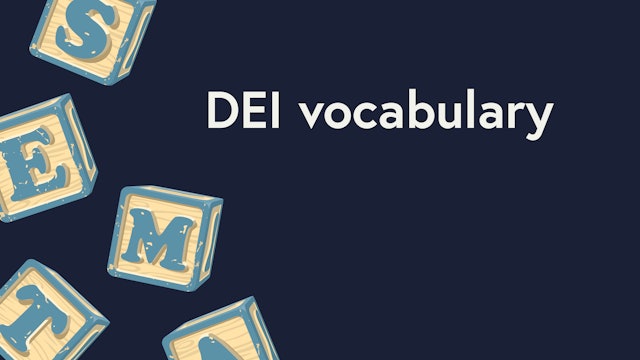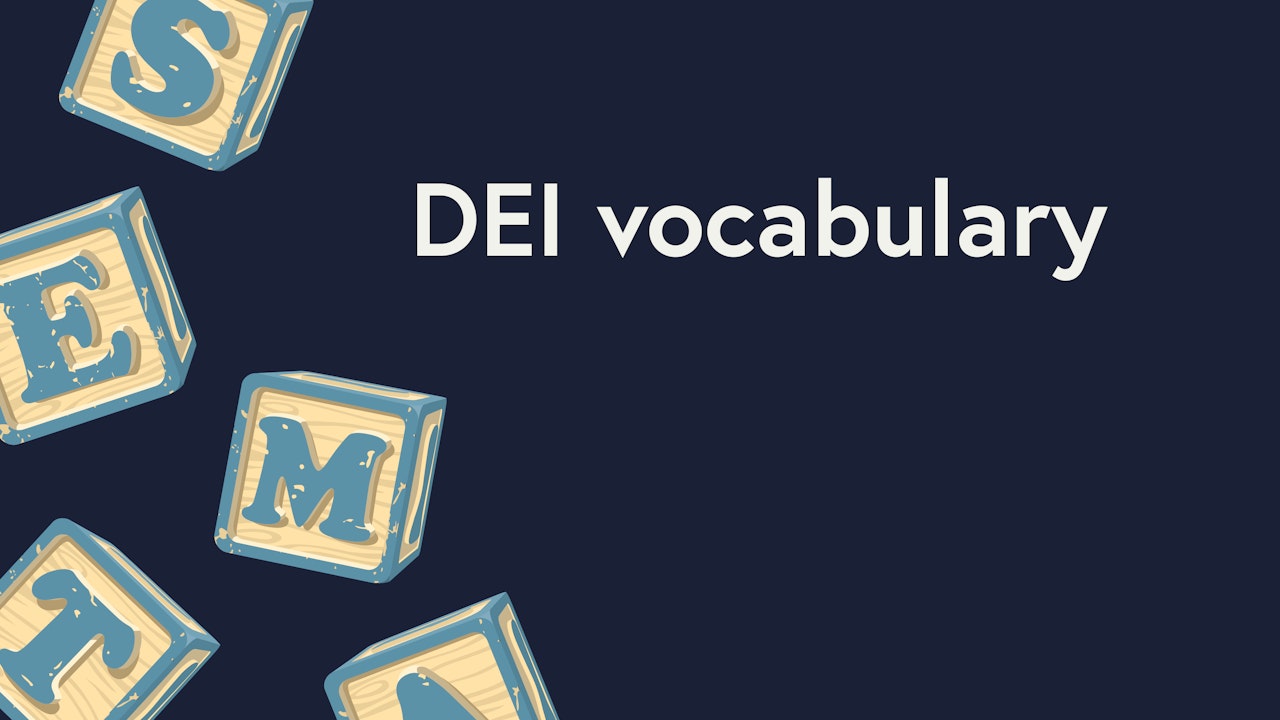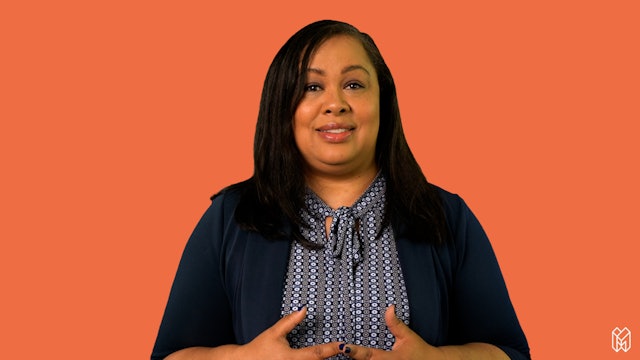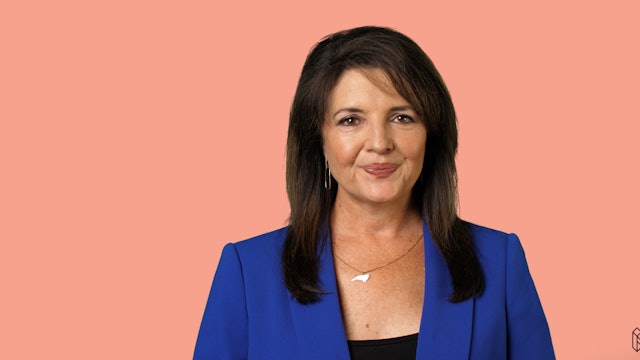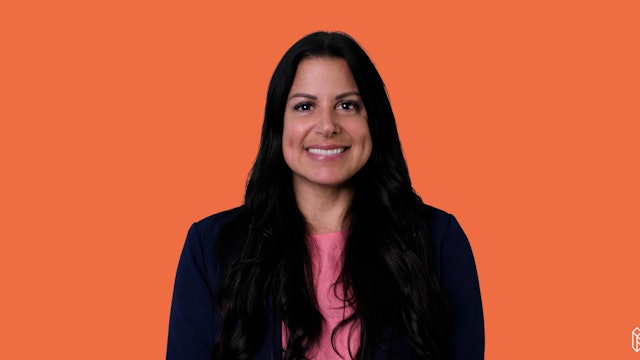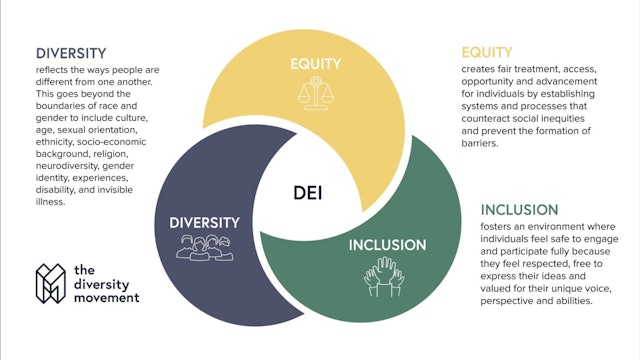-
What Do the Letters in LGBTQ+ Mean?
Confirm what each letter and symbol stands for in some commonly used acronyms, such as LGBTQ+, as a helpful starting point for recognizing and respecting human diversity in terms of sexual orientation and gender identity.
-
What is Gender Expression
Review the definition of gender expression and learn how it may or may not align with traditional gender stereotypes. Plus, why and how gender expression is separate from sexual orientation.
-
What is Equity?
Explore a key component of DEI -- equity -- in greater detail. What is equity and how does it differ from equality? Learn why equity is described as “leveling the playing field” versus treating everyone the same way.
-
What is the Difference Between Racism, Prejudice, and Bias?
Learn to differentiate the concepts of bias, prejudice, and racism and analyze how these three forces feed into each other, resulting in systemic racism. Seeing these connections can help us as individuals and as a society to function in a healthier, more equitable and inclusive way.
-
What is Racism?
Explore three different facets of racism -- overt, covert, and systemic -- to gain a better understanding of how racism impacts people and our society and be better prepared to address and combat it.
-
Difference Between Sexual Orientation and Romantic Orientation
Understand the difference between sexual orientation and romantic orientation and how the two may go hand-in-hand or be exclusive of one another. Also learn some of the various romantic orientations that exist.
-
The Psychology of In and Out Groups
Benefit from an understanding of how people categorize, identify with, and compare in-groups and out-groups, a natural and automatic cognitive process that sometimes leads us to the pitfall of prejudice and hostility to those unlike ourselves.
-
When and What is Celebrate Diversity Month?
Learn more about Celebrate Diversity month, including when and why it was created, productive ways to observe it, pitfalls to avoid, and how it fits into the bigger picture of DEI programming within your organization.
-
Defining Intersectionality
Zero in on the definition of intersectionality and how it relates to the multiple dimensions of diversity. Consider helpful examples that demonstrate how the concept of intersectionality helps us to recognize each person’s unique identity, advantages, and disadvantages in our society.
-
What is Gaslighting?
This helpful description of the behavior known as gaslighting will assist you to both recognize and root out this harmful form of harassment in your workplace and protect your employees from being victimized.
-
Gender Identity 101
Confirm the meaning of the term gender identity along with definitions of multiple terms people use to describe the particular gender identity personal to them. Get guidance on when, whether, and how to respectfully ask someone about their gender identity.
-
What is Sexism?
Expand your understanding of the term sexism, the wide-ranging societal impacts of sexist actions and attitudes, and how to mitigate the effects of sexism by acknowledging and addressing stereotypes, biases, and sexist behaviors.
-
What is Gender Identity?
Consider how differently people are treated depending on whether they identify as a man, a woman, a person who is transgender or nonbinary, or another gender identity. By adding to your understanding of gender identities, you can better relate to and support others, no matter how they identify.
-
Understanding Sex, Gender Identity, and Sexual Orientation
Confirm your understanding of the terms sex, gender identity, and sexual orientation, and both the interplay and distinctions between the three. Learn when, whether, and how to discuss these self-identifying labels with others.
-
Why Does Diversity and Inclusion Matter?
Gain a better understanding of diversity and inclusion in the context of the workplace, the many ways to foster feelings of belonging and loyalty among your employees, and how an inclusive environment can unlock the impressive power of diversity throughout your organization.
-
What is Tokenism?
Take a closer look at “tokenism” and how this practice ends up harming rather than helping companies that engage in it. Learn how to avoid the pitfall of tokenism and move beyond it to create a truly diverse, inclusive culture and a more productive and profitable business.
-
Sexuality Terminology 101
Broaden your view of the many variations of human sexuality, identities, and orientations by absorbing the definitions of 23 different terms -- a list that is ever-evolving as certain terms are phased out of accepted usage and new terms are added.
-
What's the Difference Between Equality & Equity?
Take a closer look at two concepts -- equality and equity -- to gain clarity on the significant differences between the two. Simple examples help show why creating an equitable workplace is a win-win for companies and their employees.
-
What is the Difference Between Microaggression and Macroaggression?
Get clear on the definitions of two words that are frequently heard in DEI-related discussions: microaggression and macroaggression. Benefit from helpful examples of each, recognize their negative impacts, and identify steps your organization can take to eliminate them.
-
What is Code-Switching?
Ever heard the term code-switching? Check out what it means, when it happens, and why it matters. Recognize how code-switching behaviors detract from employees’ contributions to problem solving, productivity, and company culture.
-
What is the Gender Binary?
Gain a broader perspective on gender beyond the binary -- the two traditional categories of man and woman. Learn more about people who consider themselves nonbinary, which can mean relating to both of these genders, neither, or a personal identify that’s somewhere in-between.
-
What is Diwali?
The Diwali festival, also known as Divali or Deepawali, is a holiday that’s widely celebrated by people from a variety of religions and countries. Here’s an overview of this celebration honoring the triumph of good over evil.
-
What is Generational Diversity?
Understand what “generational diversity” means and how it can positively impact your organization, as well as how to achieve generational diversity in the workplace and avoid ageism as an obstacle.

